I remember it was ten days ago, suddenly someone in the chat room found me, saying that he had been in the cryptocurrency circle for less than a month and lost nearly 40,000 U from three years of savings, leaving him with less than 4,000 U, specifically 3,756 U. In reality, 40,000 U is also a considerable amount of money. He told me he was going crazy, and I just said one thing: recover within a month, follow the command.
He also believed in me very much, just happened to encounter the downtrend of $ETH from 4,600 down to 3,800. In ten days, the account's curve shot up straight, earning back 25,904 U. I remember it very clearly; he also saw hope and gradually stabilized his mindset.
I am not a god, and there are no gods in the crypto world. I only earn money within my understanding, and more importantly, the irreplaceable trust. I only do one thing: help people reach the shore.
Core of trading: Position management, finding support/resistance, and understanding trends, then executing.
This is the most important, bar none. The goal of flipping accounts means you need to profit continuously, and any significant loss could ruin all your efforts and even force you out.
What is support?
Example: If the price of 'Auntie' does not stabilize at 2465, it will continue to fall, testing the support below: 2410, 2383. These two positions are also our selling points for short positions and buying points for long positions. If it breaks down, we just exit manually and wait at the next support level. Contracts are originally about risking small amounts for large gains; trying and testing small costs to gain probability of success. There is no absolute success; as long as we make a mistake, we should exit. Avoid stubbornly holding on.
What is resistance?
Example: If Bitcoin stabilizes at 68800 today, it will make a four-hour rebound. The resistance above the rebound: 69500, 69900. These two positions are our selling points for long positions and buying points for short positions. If these two prices are broken, we can just exit manually and continue waiting at the next resistance level. Remember not to hold on stubbornly; breaking through means the bulls are strong, and holding on is pointless.
The four key points of flipping the account:
High risk-reward ratio: Pursue 'small stop losses, large take profits'.
Never hold a position: Once the market hits the preset stop-loss point, you must exit decisively.
Trend market: Flipping accounts requires compounding, and compounding requires continuous, substantial profits.
High execution: Plan your trades, trade your plan.
Recently, many people found me through the chat room, asking me to help them recover losses; there are all kinds of losses, and I managed to help them recover all within a week. How did I do it?
Target: Only trade BTC or ETH.
Strategy: Before and after major news or data releases (such as Federal Reserve decisions, CPI data), the market will experience violent one-sided fluctuations.
Method: Before data is released, make a directional prediction based on technical patterns. The moment data is released, the market will choose a direction, and you should follow the trend and enter.
Position: Use 10%-20% of your capital at once.
Discipline: Set a very narrow stop-loss (such as 0.5% of the fluctuation range), and exit immediately once it is triggered. If the direction is correct, quickly move the stop-loss to break even, allow profits to run for a while, and then swiftly close the position.
To be honest:
Surviving is always more important than making quick money. A single liquidation may mean you never have a chance to recover; you must believe that 'locking in profits' is the hard truth. Betting on 10x or 20x is just gambling; here, I only focus on 'stability'.
Surviving is always more important than making quick money. A single liquidation may mean you never have a chance to recover; if the market is unstable, walk 'steadily' with me.
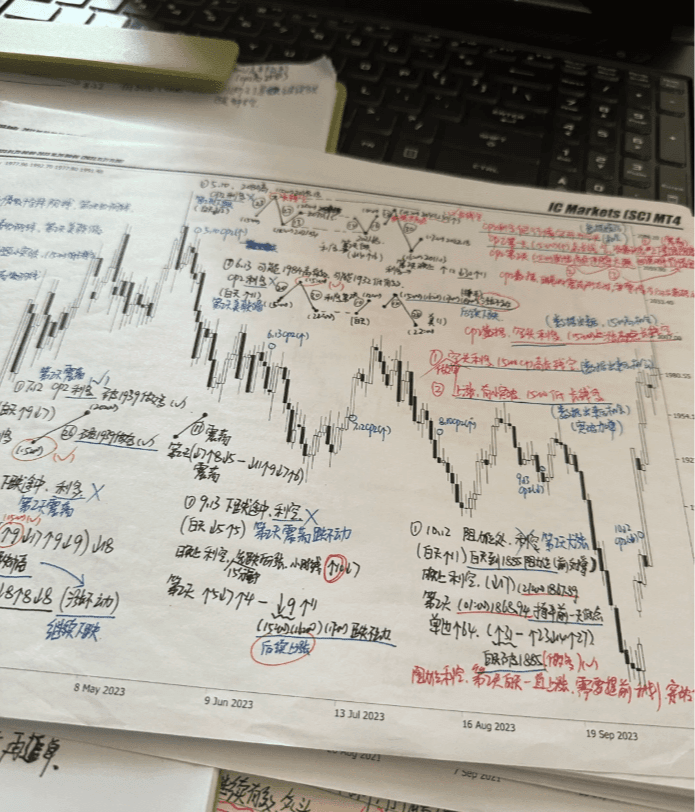
Let me break down how to analyze support and resistance. This is the most basic skill of a qualified trader.
Let’s talk about traditional strategies:
1. Shadows touching multiple times without breaking, forming support and resistance.
When the market's upper and lower shadows touch the same price area multiple times without forming an effective breakthrough and then retract, this area will form an objective cost zone after a lot of turnover, which often can serve as support or resistance in the next round of the market.
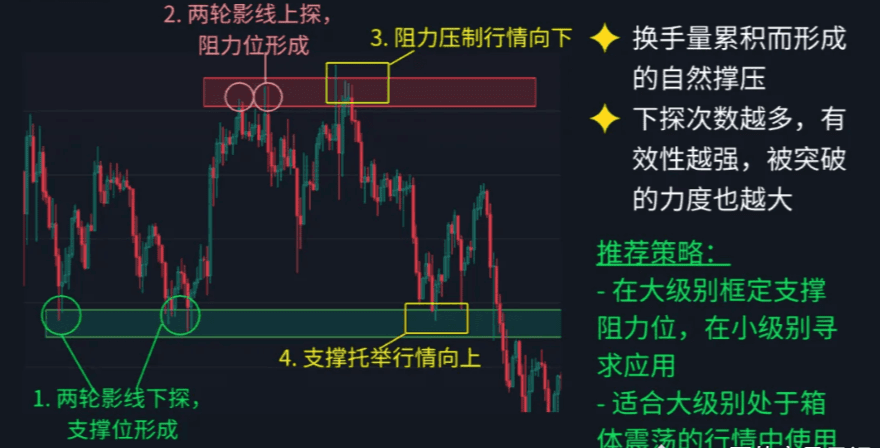
2. Core support of pullbacks in an upward trend 'chip peak'
When the market has just completed a round of upward movement and starts to pull back, review the volume distribution during that upward movement to find the densest turnover price range, which is the 'chip peak'. You can take the bottom range of that area as the support area. When the price approaches that area again, it usually will first consolidate sideways before continuing the trend.
3. Support and resistance zones of the main structure of market waves 'SMC Order Block'
Order Block is an important indicator in SMC and order flow trading, referring to a specific area formed on the price chart where large institutions or major funds concentrate a large amount of buying or selling in the market.
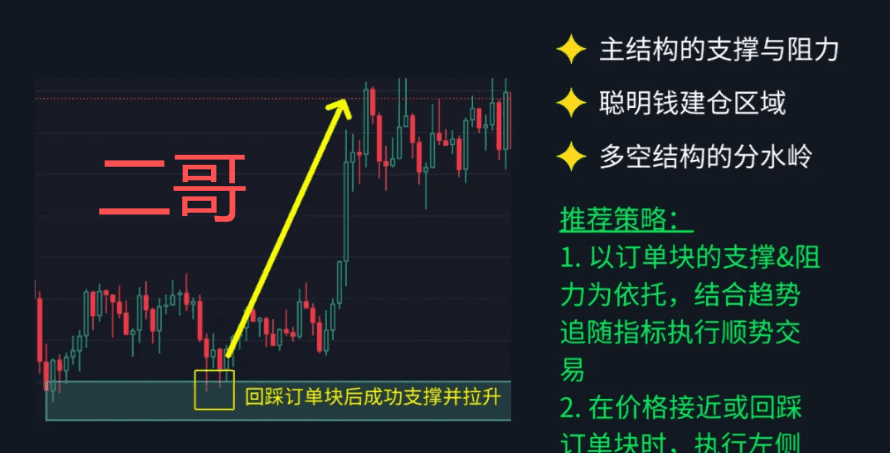
4. Key anchor points for reversal of buying and selling forces 'liquidation map'.
The liquidation map marks the price range where a large number of positions will be forcibly liquidated. Once the price reaches that range and the corresponding positions are forcibly liquidated, a phenomenon of 'liquidation washout → liquidity collection → trend reversal' will occur, driving the market to move in the opposite direction.
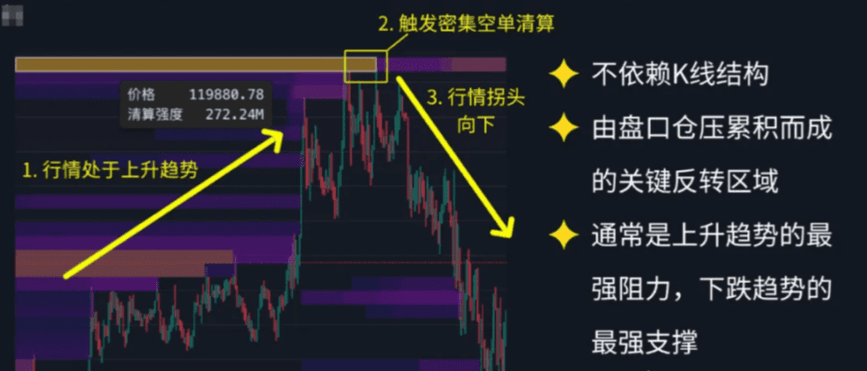
5. Price breaks through invisible acceleration 'Large Limit Order'
'Whales' refer to large holders or institutions that possess a large amount of capital or chips. When whales place large limit orders in the market, they can usually form strong support or resistance near the order price. For example, if a whale places a large sell order, the bulls may lack the confidence to completely consume the whale's order, leading to a gradual emergence of profit-taking sell orders before reaching the order price, weakening the upward momentum.
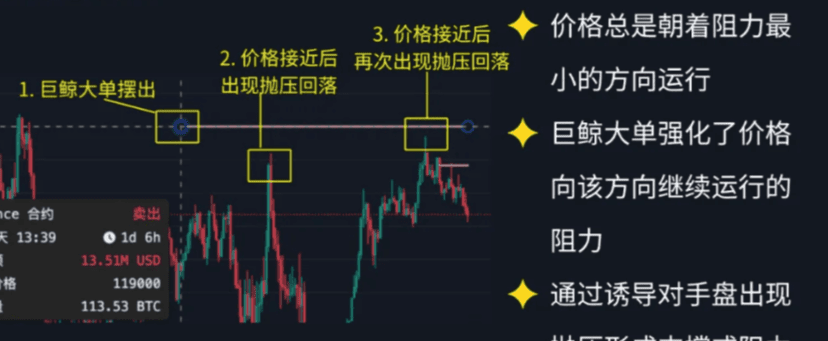
6. Short-term level support and resistance gauge 'thick order area'
'Thick order area' indicates the price range in the market order book where a relatively large number of buy and sell orders are aggregated. When the distance from the current price to the major structure's support and resistance is relatively far, and the reference for short-term trading at a small level is weak, the thick order area can be used as a support and resistance reference.
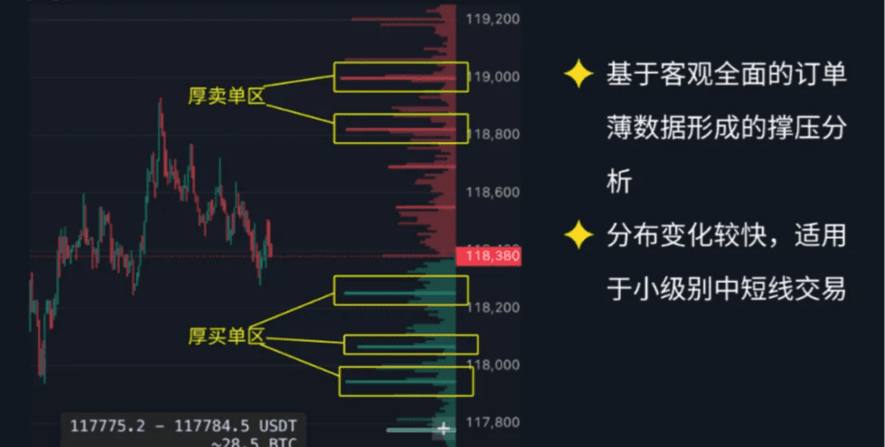
In the crypto world, I hope this set of indicators can help you stand out. Short-term swings can be operated on the one-hour and four-hour charts to achieve perfect swings. I hope you can make good use of this technology and gain a different experience, becoming your tool for a comeback.
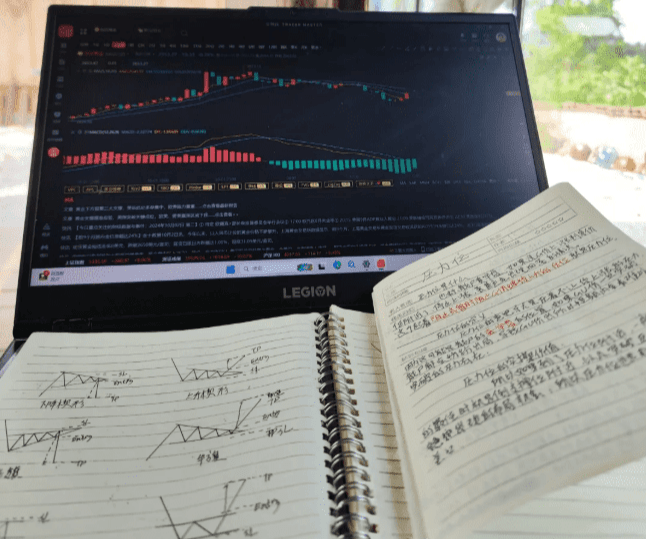
Staying up late to watch the market and guess tops and bottoms? That's just retail traders' self-satisfaction. Real profits come from certainty about the big trend and the patience to wait. @加密秀秀 My task is simple: In a bear market, remind you to stay out and watch, in a bull market, help you control your FOMO, and call you when a certain opportunity arises. Don't hesitate, keep up the rhythm, execute well, and in the next wave of profitable market, we can lie back and outperform 90% of people. In the crypto world, it’s not about effort, it’s about strategy and timing. $ETH #加密市场反弹

